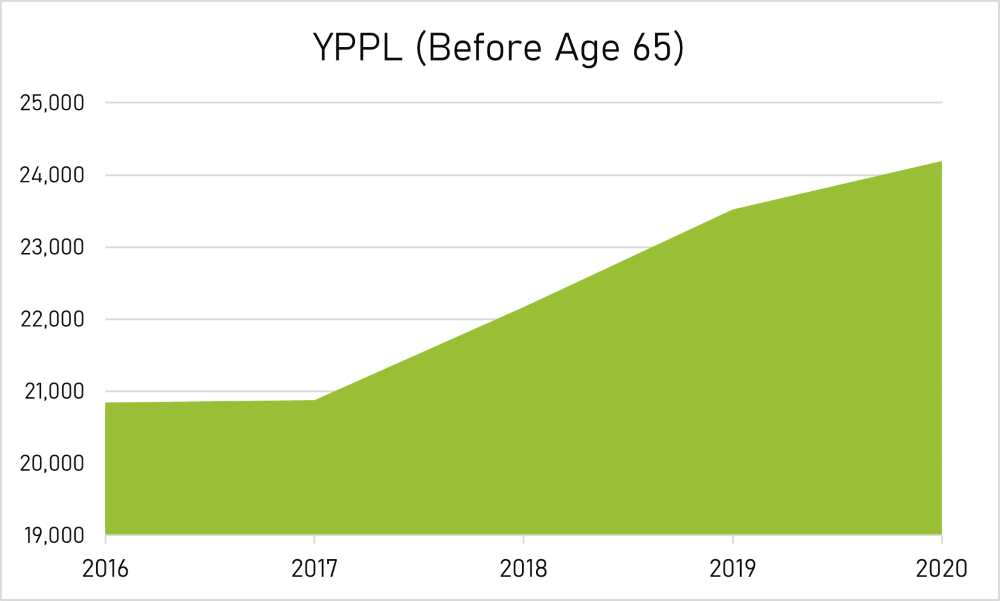Getting sick with the occasional cold or flu is, unfortunately, a reality of life. With so many people around us and countless potential vectors of contamination, battling with sporadic illnesses is nearly inevitable. However, some illnesses are entirely preventable. Sicknesses caused by toxic environments, poor air quality, and unsafe foods can oftentimes be prevented by proper regulatory measures and oversight.
The Occupational Safety and Health Administration (OSHA) and Environmental Protection Agency (EPA) are tasked with monitoring, regulating, and minimizing the impact of humans on the natural world and population centers. If you are nonetheless exposed to dangerous environmental conditions due to the negligence or carelessness of an individual, group, or other entity, you may have grounds for a personal injury lawsuit. In today’s article, we discuss environmental illnesses and litigation. Keep in mind that you should always speak to an experienced, local personal injury attorney to discuss the specifics of your unique case.
What is an Environmental Illness?
An environmental illness occurs when you are exposed to dangerous substances, chemicals, or toxins that make you sick. These environmental hazards can be found at your workplace, home, or in nature. Some frequently-encountered health hazards include:
- Poorly vented gas ranges and wood-burning stoves
- Exposure to asbestos
- Unsafe drinking water
- Chemicals in cigarettes
- Workplace chemicals
- Lead poisoning
How Do You Know if You’re Experiencing an Environmental Illness?
It can be very challenging to determine whether you’re being actively harmed by an environmental hazard. The symptoms of environmental illnesses may be difficult to differentiate from those of several more common sicknesses. Stay aware of the following symptoms:
- Rashes
- Nausea
- Headaches
- Coughing
- Fever and chills
- Muscle aches
If you suspect that something around you is causing you to feel unwell, you should speak to a doctor as soon as possible. An exposure history may be able to shed light on the source of your illness. Your doctor will ask a series of questions about your hobbies, workplace, lifestyle, home, current and past jobs, and workplace to help narrow down the potential causes of your symptoms. This may help uncover any recent or ongoing exposure to chemicals or other hazards.
What Causes an Environmental Illness?
Since environmental illnesses can arise in many ways, we wanted to put together a list of some of the more frequently-encountered causes of health issues. The following problems can have a detrimental impact on the victim’s health or cause property damage:
- Excessive air pollution: The Clean Air Act gives the EPA the ability to regulate the amount of toxic waste that corporations may emit into the air. If a company exceeds these limits for dangerous materials such as carbon monoxide, ethylene oxide, sulfur oxide, or nitrogen oxide, it may be possible to hold them responsible for corresponding health concerns.
- Excessive or improper use of pesticides: Pesticides can be deadly to the health of humans and wildlife if over-used or improperly utilized in densely populated areas. Companies that fail to adhere to regulations governing the proper and safe use of pesticides may be penalized and held responsible for corresponding injuries.
- Pollution that reaches waterways or water tables: When a victim is exposed to environmental toxins due to the careless, negligent, or illegal activities of a company, they may be liable for harm caused. Some examples of water pollution include oil spills and toxic waste dumping.
- Chemical manufacturing & waste: When used correctly, many chemicals have practical purposes. However, they can cause serious harm to both humans and the environment when not contained and used safely. If someone is injured due to chemical exposure, the responsible company may be responsible for the harm done.
How Serious is the Impact of Environmental Illnesses?
A recent study looks at the cost, in years of potential life lost (YPPL), of environmental injuries over recent years. In this case, YPPL measures the estimated average years a person under the age of 65 would have lived, had they not suffered a premature death. Somewhat alarmingly, the YPPL to environmental injuries in the United States has steadily climbed from 2016-2020, the most recent year for which data is publicly available. In 2020, the YPPL value was 24,190 years.
Can You Feasibly Reduce Your Exposure to Hazardous Materials?
According to the U.S. Department of Health and Human Services, over 12 million people across the world die every year due to unhealthy working or living conditions. You may therefore be wondering whether it is possible to reduce or limit your exposure to such conditions, to protect yourself and your loved ones. In some instances, it is possible to reduce your exposure to toxins. Using an electric stove and cooking in a well-ventilated area, for example, reduces your exposure to toxins released from burning wood.
However, some types of pollution are very difficult to avoid. If you live in a city, reducing exposure to pollution from cars and factories will be nearly impossible. Depending on where you live, there may be plans or policies in place to reduce public exposure to certain chemicals or substances. Checking your area’s policies on pollution and toxins can give you a better sense of your community’s tolerance for environmental hazards.





No Comment